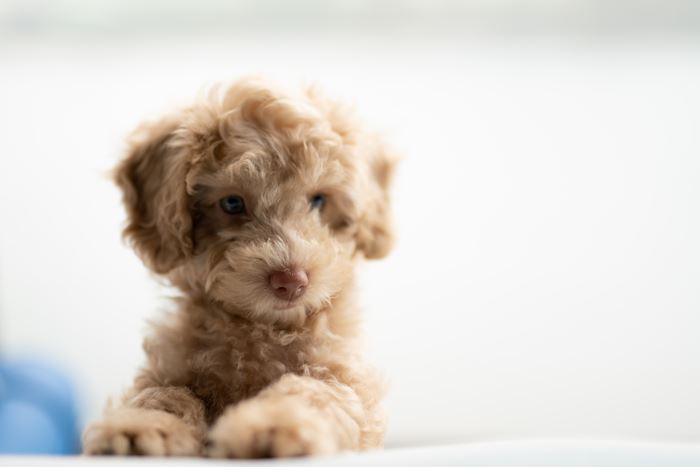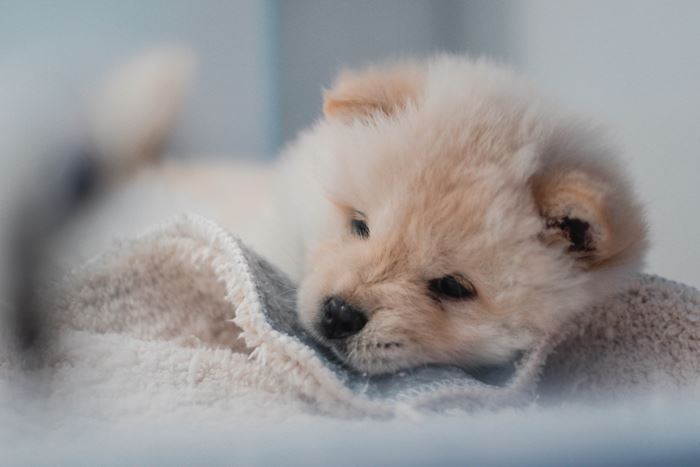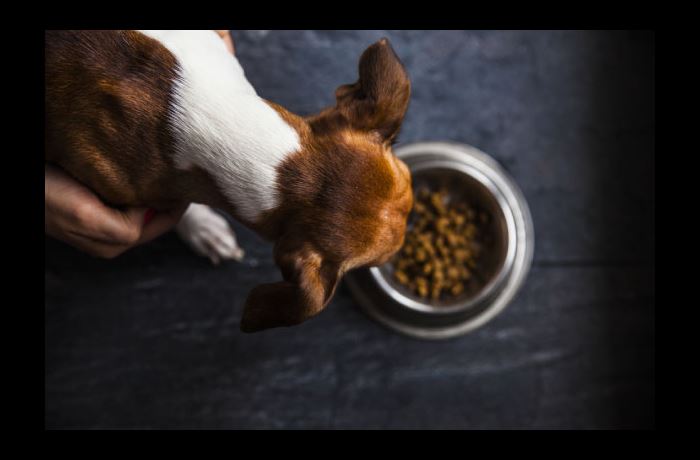EUKANUBA PUPPY SERIES
GET STARTED
Congratulations on your new puppy! Bringing a puppy home for the first time can be very exciting, but it also brings a lot of responsibility. Basic pre-puppy planning will help minimise stress in your household and make sure your home has everything in place to meet your new puppy's needs.
Step 1: Making Your Home Puppy-Safe
There are lots of puppy supplies you’ll need to start shopping for so your puppy is comfortable and happy in their new home. Before you go shopping, have a look around your home to make sure it’s a safe environment for a puppy to run around in.
- Start by making sure all chemicals and detergents are stored away
- Cover any electrical cords
- Put breakable items out of reach.
- If you have a pool, you should make sure this area is completely covered and fenced off.
- Stock up on cleaning supplies, especially when your puppy isn’t toilet trained. Stain remover, paper towels and deodorising sprays will be your best friend for the first couple of weeks.

Step 2: Getting Your Puppy Home
Once your home environment is puppy-safe, the next step is figuring out how to get your puppy home. If you are driving them in a car, consider investing in a travel crate or harness that’s suitable for your puppy’s age and size. This will provide a secure environment to travel in, now and in the future.
- Before setting off, spend some time with your puppy in the car so they can get used to their new surroundings.
- Encourage your puppy by using praise and rewards for calm behaviour. Your puppy’s first journey home with you is likely to be a stressful time for them as they are leaving their mother and littermates and may never have been in a car before.
- Take a towel when you collect your puppy and rub it on mum and littermates so you can bring some of their scent home on the towel, this will help familiarise your puppy with their new environment.
- Take some paper towels and a plastic bag too – just in case your puppy gets car-sick
Step 3: Where Will Your Puppy Sleep?
Before your puppy arrives, you should decide where your puppy’s area will be in the home and where they’ll be sleeping at night. Using a puppy-pen is a good way to manage their behaviour at bedtime and will keep them safely confined when they can’t be supervised. The play pen should be big enough for your puppy to stand up and walk around in and should have plenty of fresh water and warm bedding.

Step 4: What Else Will Your Puppy Need
It’s important to organise a collar and ID tag for your puppy in case they ever get lost. We know it’s difficult to take your eyes off a cute puppy but there’s always the risk they can run off or escape. Your puppy can quickly outgrow their collar, so make sure you have another for when they start getting bigger. Also, check with your local council to see if there are policies that require you to microchip and register your puppy.
Step 5: Accessorise!
It is no secret that puppies love to chew, so buy a couple of chew toys to occupy your puppy and prevent them from chewing on furniture and your belongings.
- Make sure toys aren’t too hard on your puppy’s teeth.
- You should also avoid giving your puppy toys that can break and cause choking hazards.
- Avoid giving large pieces of rawhide which can break off and cause blockages in your puppy’s intestines.
- Don’t give your puppy soft toys with foam stuffing that can be easily ripped apart. Your puppy might swallow parts of the soft toy or stuffing which can be a choking hazard.
If your puppy has a long coat, you may also need to invest in some grooming tools such as combs and dog-friendly shampoos. Long-haired breeds should be groomed regularly in adulthood so it’s good to get your puppy used to this process early on so it doesn’t become a stressful experience later.
Step 6: Your Puppy's Health
Before your puppy steps in the door, it’s a good idea to start researching the best vets in your local area and look into puppy training schools, groomers and boarding kennels. Once you’ve found your vet of choice, you should have a chat to them about some of the appointments you’ll need to make.
Besides a check-up, your puppy will also need to be taken to the vet for worming, vaccinations, microchipping and potentially neutering. It’s also important to remember that new puppies should be kept away from other dogs until they’ve had all their vaccinations to avoid getting an infection.

Step 7: Feeding Your Puppy
When it comes to feeding your puppy, it’s worth doing some research on the nutritional support your puppy will need from their diet. Ensuring your puppy is getting the best nutrition from a complete and balanced diet will mean they are getting the support they need while they grow. A high-quality diet, such as our Eukanuba puppy range, is a complete and balanced diet to support the growth and development of your growing puppy into adulthood. Read our guide to find out the essential nutrients a puppy-diet should have.
Food can also help you to train your puppy. Many dogs are highly motivated by food, so using treats as a reward when they are learning to sit or go to the toilet can reinforce good behaviour. Treats will need to be factored into your puppy’s daily food intake, so your puppy doesn’t put on too much weight.
Step 8: Routine is Best
Establishing a set of rules and routine for your puppy as soon as they arrive is a good idea, especially if you live in a multi-pet household. When your puppy arrives, they’ll most likely want to test boundaries by experimenting with various behaviours (good and bad) to figure out what they can get away with. It’s important these rules and routines continue to be enforced to help keep your puppy’s training consistent. Don’t get angry in front of your puppy. Positive rewards and encouraging good behaviour, rather than punishment, will be better for fostering a strong bond, mutual respect and a rewarding relationship with your puppy. Remember, if you’re frustrated, your puppy is most likely VERY frustrated.
We hope the guide helped and that you will have a wonderful time with your new puppy. Have a look at the rest of our blog for more puppy resources!



